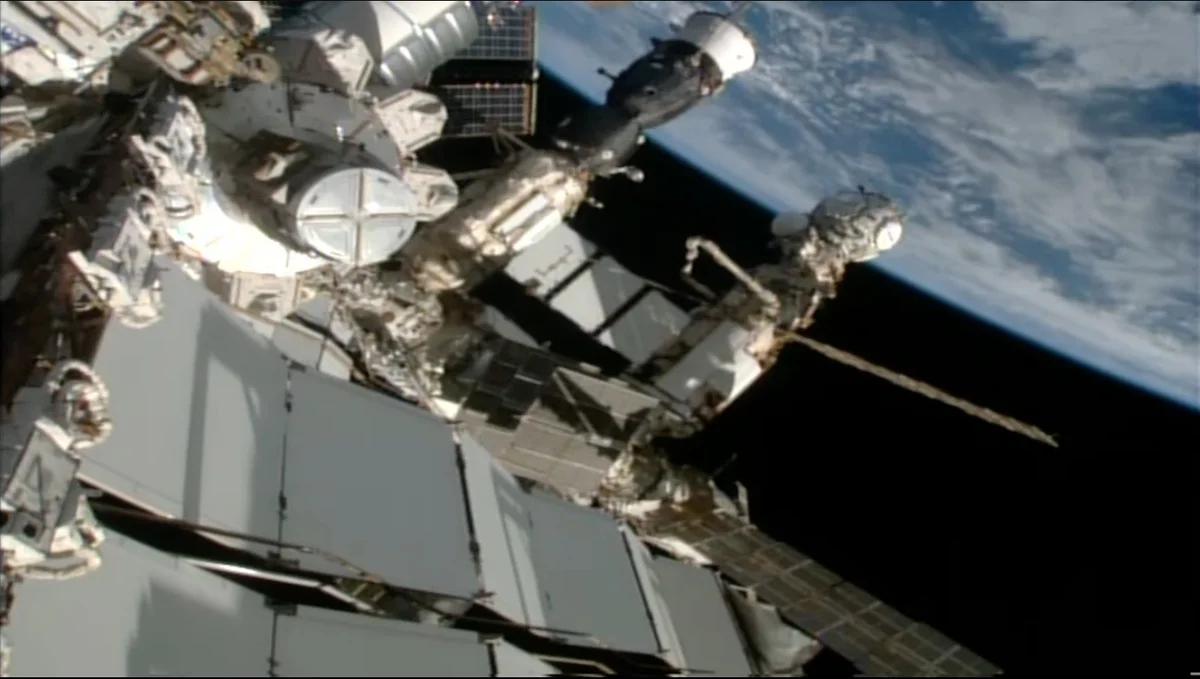There was a coolant leak from the Russian side of the ISS
- October 10, 2023
- 0
A radiator on the Russian section of the International Space Station began leaking coolant on October 9; this was the third such incident involving Russian equipment at the
A radiator on the Russian section of the International Space Station began leaking coolant on October 9; this was the third such incident involving Russian equipment at the

A radiator on the Russian section of the International Space Station began leaking coolant on October 9; this was the third such incident involving Russian equipment at the station in less than a year. Flight controllers noticed flakes coming from one of two radiators of the Nauka module on the Russian portion of the station around 1 p.m. ET, NASA said in a statement. This module, also known as the Multi-Purpose Laboratory Module (MLM), was installed on the station in July 2021.
Flight controllers notified the station crew, who visually confirmed the leak. “Yes, there is a radiator leak at MLM,” NASA astronaut Jasmine Mogbeli told officers in the audio recording NASA posted online.
It is unclear how much coolant leaked from the radiator and for how long. NASA said in a statement that Roscosmos notified the agency that the leak occurred from a backup radiator at Nauka. This radiator was originally on the Rassvet module, launched to the station in 2010, and transported to Nauka earlier this year as part of a series of spacewalks to equip Nauka.
In its statement published on social media, Roscosmos said that the main thermal control system at Nauta was working properly and neither the station nor the crew were in danger. NASA offered a similar assessment, saying there was “no impact to the space station’s crew or operations.” However, the station team closed the shutters on the American section of the station to prevent contamination from the coolant leak.
This incident was the third incident in less than a year in which a Russian spacecraft on the ISS suffered a coolant leak. In December, the Soyuz MS-22 spacecraft lost its coolant three months after arriving at the station. This resulted in Roscosmos replacing this spacecraft with the unmanned Soyuz MS-23 spacecraft. This decision kept the crew, who launched from the station aboard Soyuz MS-22, in space for another six months, returning on September 27.
In February, the unmanned cargo ship Progress MS-21 also experienced a coolant leak. The leak occurred just before the spacecraft, which was launched last October, left the station.
These two leaks raised suspicions that there was a design or manufacturing defect in the spacecraft. However, Roscosmos concluded that the leaks were caused by impacts from micrometeoroids or orbital debris. NASA officials also agreed with this conclusion.
“The NASA team also looked at the incident independently of the Russian team, and based on the information our Russian colleagues gave us, we found nothing but an external force, debris, or anything else,” said Joel Montalbano, NASA’s ISS program manager, in a July interview. at a briefing.
It is unclear whether the leak will affect plans for two spacewalks in the US segment. NASA astronaut Loral O’Hara and ESA astronaut Andreas Mogensen plan to conduct a spacewalk on October 12 to perform station maintenance and collect science samples, while O’Hara and Mogbeli will conduct another spacewalk on October 20 to perform additional station maintenance. Source
Source: Port Altele
As an experienced journalist and author, Mary has been reporting on the latest news and trends for over 5 years. With a passion for uncovering the stories behind the headlines, Mary has earned a reputation as a trusted voice in the world of journalism. Her writing style is insightful, engaging and thought-provoking, as she takes a deep dive into the most pressing issues of our time.